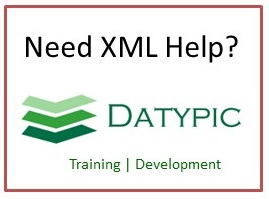RFQLineType
Complex type information
Namespace: http://www.openapplications.org/oagis/10
Schema document: Common.xsd
Properties: ID: oagis-id-7256738f47184cabb3423683fad78438
Content
- Sequence [1..1]
- LineNumberID [0..1] Is the Line Number of the given Line Coponent within the document. LineNumbers are assigned by the sending system.
- LineIDSet [0..*]
- Description [0..*]
- Note [0..*]
- DocumentReference [0..*]
- Attachment [0..*] The Attachment represents binary data files that may be included within a BOD. These files replace the paper specifications and drawings attached to a BOD definition to clearly communicate design requirements. This Data Type is optional. Attachment usage is further defined by its position.
- Status [0..*] Indicates the status of the associated object by providing the Status Code along with a description and when the status is effective.
- Item [0..1] Specifies details concerning a thing which could be a product, service or virtual things. Item typically provides the details of the generic Item information.
- UnitPrice [0..1] Unit price of the item for the number of items in the unitCode specified in the PerQuantity elements. In most cases the unitCode of the PerQuantity is the same as the unitCode of the Quantity element above.
- ExtendedAmount [0..1] Is an amount not including taxes or charges. In the case of orders, this is typically the Unit Price times the Order Quantity.
- TotalAmount [0..1] Indicates the total amount of the object associated. This includes the Price and the total of all the charges, allowances and taxes.
- AmountDiscount [0..1] Specifies details for how an amount is calculated
- CatalogReference [0..1] Is a reference to a catalog.
- ContractReference [0..1] Is a reference to a contract
- SampleIncludedIndicator [0..1] Denotes that an Itme sample is either included or should be included
- RequiredDeliveryDateTime [0..1] Indicates the date in which the buyer/customer requests the order to be delivered.
- AllowSubstitutionIndicator [0..1] Indicates if the buyer will accept the order if it is shipped prior to the dates on the order.
- ShipToParty [0..1] Identifies the ShipToParty for the document or the line. In a lot of cases, this is the same as the CustomerParty. In multi-organization purchasing, the CustomerParty may be different from the BuyerParty
- DrawingAttachment [0..*] Drawing Attachment allows drawings to be attached to a Noun or Component.
- PartialShipmentAllowedIndicator [0..1] Identifies if a partial shipment to a customer is allowed.
- DropShipmentAllowedIndicator [0..1] Indicates whether the order can be drop shipped or not.
- EarlyShipmentAllowedIndicator [0..1] Communicates if it is permitted to ship a good or service prior to the date it is due
- LicenseIndicator [0..*] Indicates what type of licenses are required and indicates which are required.
- FulfillmentTerm [0..*]
- TransportationTerm [0..*] The terms of the transportation agreement.
- PaymentTerm [0..*] Identifies the Terms i.e. the time and number of payments and the amount or percentage of the payment.
- DistributeCharge [0..*] Specifies the details for allocating a portion of a charge properly
- DistributeTax [0..*] Specifies the details for allocating a portion of a tax properly
- Tax [0..*] Specifies all the details needed for specific kinds of Taxes and Tax charges
- BuyerParty [0..1] The entity that is responsible for Buying the document or element in which it is associated. Additionally, the contact may be a person or a group or department.
- RequesterParty [0..1] The party that requested the associated entity.
- RequisitionReference [0..*] Is a reference to a Requisition
- EnterpriseUnit [0..1] Identifies the given portion of an organization. Some commonly defined Units are identified here. These units are typically used to track financial data in reporting systems within an organization. Similar to Business Units, Organizational Units are only relevant within an enterprise
- DeliveryTimeTolerance [0..1] Indicated the flexibility in the required delivery date that is allowed by the requester
- Message [0..*]
- QualificationTerm [0..*] This is used to describe preferences that will be used to evaluate responses to an RFQ. For example, to identify a preference for sharing CAD data in VRML format the ID = VRML, Type = CAD and Value = 1 or Yes
- RFQSubLine [0..*] The Component Subline represents any additional information concerning the product on the Line. The Subline can be used to describe a specific configuration of the ordered item.
- RFQSchedule [0..*] Indicates the schedule for the delivery of this line item.
- Extension [0..1] Allows the user of OAGIS to extend the specification in order to provide additional information that is not captured in OAGIS.This is done by defining the additional information in XML Schema and referencing the new schema in the xml instance document through the use of namespaces. Once this is done the additional information defined there can be carried in the BOD XML instance document.The Open Applications Group will make best efforts to quickly consider all proposed submissions.The Extension is always the last element in all components, except where the component has been extended inline.
from type LineIdentificationBaseTypefrom type LineBaseTypefrom group FreeFormTextGroupfrom group ReferencesGroupfrom type StatusLineBaseTypefrom type RequestLineBaseTypefrom type ProcurementLineBaseTypefrom type RFQLineBaseType
Attributes
| Name | Occ | Type | Description | Notes |
|---|---|---|---|---|
| typeCode | [0..1] | CodeType_1E7368 | from type LineIdentificationBaseType | |
| actionCode | [0..1] | ActionCodeContentType | from type LineIdentificationBaseType |
Used by
- Element RFQLine



